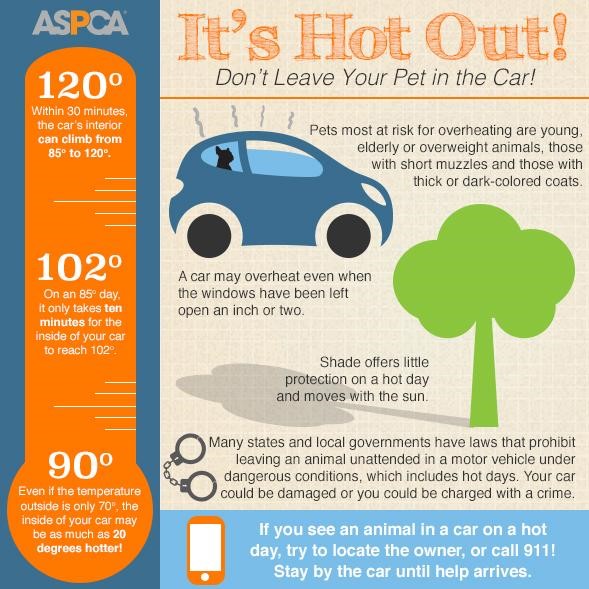Warm Weather Safety Tips: Part I
Happy June! Now that it’s heating up outside, FHA’s Chief of Emergency and Critical Care, Dr. Janine Calabro, has some warm weather safety tips.
As an emergency & critical care doctor, my biggest worry every summer is heat-related illness, particularly heat stroke. As the weather gets warmer and more humid, pets can easily become overheated. Dogs can’t cool off by sweating, like people do. They do have sweat glands in their paws, but this is a very small portion of their total body surface area. Panting is the primary mechanism that dogs use to cool down, and they may not be able to cool themselves effectively if the humidity is too high. Safety Tip #1)We recommend that pets be kept indoors in an air-conditioned environment whenever it’s very hot and humid outside.
Safety Tip #1:
When pets are outdoors, make sure that they have ready access to shade and plenty of clean, fresh water.
- Shade from trees, umbrellas, or tarps is ideal because air flows around these objects easily.
- Dog houses can limit air movement and trap heat.
Safety Tip #2:
It’s also important not to over-exercise pets when it’s hot out.
- Limit exercise to cooler times of the day (early morning or evening) and watch your pets closely for signs of overheating.
- Carry water with you and be prepared to take breaks in the shade.
- Remember that asphalt can get very hot in the sun and may burn your pet’s paws, so try to stay on the grass whenever possible.
Safety Tip #3:
Some patients may have specific risk factors that predispose them to overheating. These pets should always be in a climate-controlled environment when it’s hot and humid out.
- Overweight pets and pets with heart disease or respiratory disease may overheat more quickly than trim, healthy pets.
- Flat-faced pets (such as bulldogs and pugs) can’t pant effectively, which makes it harder for them to cool down.
- The American College of Veterinary Surgeons has additional information available on brachycephalic airway syndrome and laryngeal paralysis, two conditions that can become quite risky when it’s hot and humid outside.
Safety Tip #4:
Early signs of overheating may include heavy panting, rapid heartbeat, difficulty breathing (particularly if accompanied by loud raspy or snorting noises), excessive drooling, a dark red or purplish tongue, weakness, vomiting, and an uncoordinated, wobbly or staggering gait.
Safety Tip #5:
Perhaps most importantly, never leave your pet unattended in a car, even for a few minutes! Temperatures inside parked cars can rise rapidly to dangerous (even fatal) levels. Cracking windows open and parking in the shade are not sufficient safeguards. In many states and municipalities, it’s illegal to leave pets unattended in parked cars when it’s warm out.
Make sure to check in next week to read part two of this two part series!

Dr. Calabro graduated from Cummings School of Veterinary Medicine at Tufts University. Her clinical areas of interest are: trauma, respiratory disease and mechanical ventilation, and critical care nephrology.
*Featured image courtesy of ASPCA.

